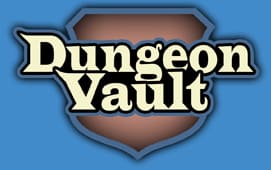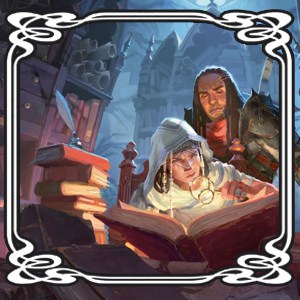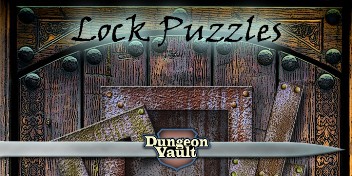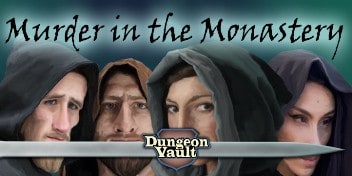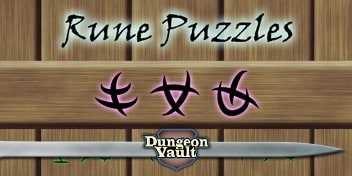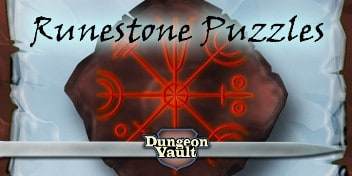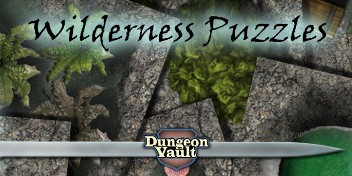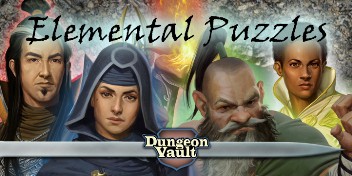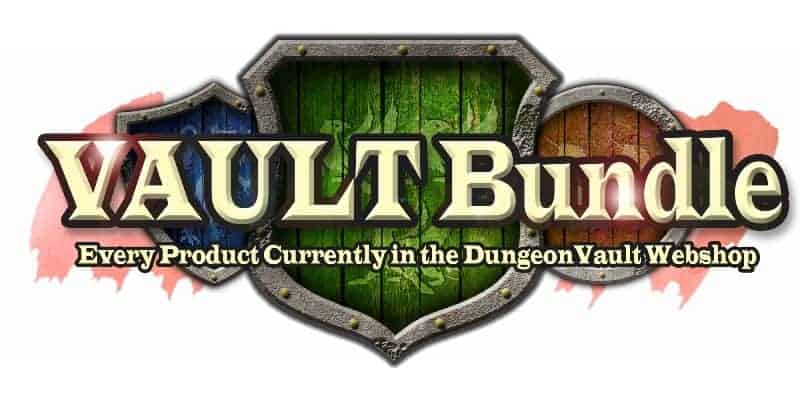
Puzzles are a long time staple of D&D. Whether it’s cracking a cipher, solving a mystery, or unlocking a treasure chest. Puzzles add fun and challenge to your campaign.
But with so many clever puzzles out there which ones do you choose? I’ve been designing puzzles professionally for over a decade. In my opinion, the best DnD puzzles are simply the ones players truly enjoy. So I’ve surveyed over 1.000 D&D players to find out which puzzles they like most. And their answers may surprise you.
*This survey taken on various facebook groups for D&D players and among my customers with randomised lists.
1. D&D Lock puzzles
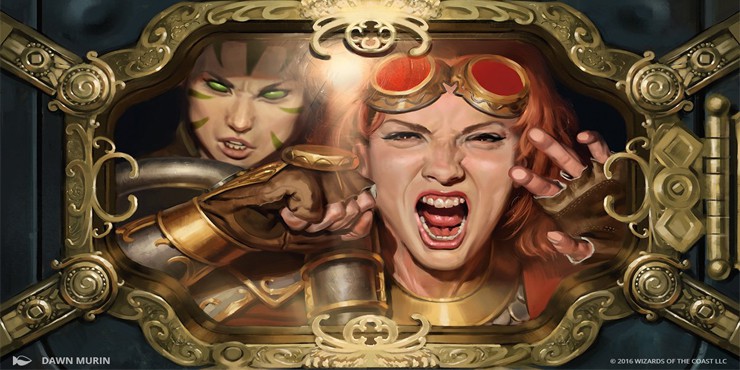
By overwhelming majority, players picked Lock Puzzles as the best type of DnD puzzle. That’s great news for dungeon masters because lock puzzles also happen to be one of the easiest puzzles to add to your game. Whether it’s locking a door, treasure chest, or sealing that dusty old tome of magic, all you need to do is place a lock puzzle on it and Kapaw! Instant puzzle fun.
A good lock puzzle usually takes about 5 to 10 minutes to solve. You want to spread out your key pieces around the dungeon and hide them in difficult-to-reach places. So simply collecting everything needed to even start solving the puzzle becomes a challenge onto itself. I’ve written a more in-depth article on how to lay out multiple lock puzzles in a dungeon if you’re interested. Another benefit of lock puzzles is that you decide during play if you want to add a puzzle lock to anything.
One of the reasons lock puzzles have so much appeal is because players love to know what is behind the lock. Will the locked chest hold a long coveted magic item? Will that sealed healing tome take care of the bard’s itch? The suspense of not knowing makes solving these puzzles rewarding and feel like a natural part of the story.
I’ve designed a Lock Puzzles pack that you can instantly place onto any object. There are over 500 ways you can combine up to nine different basic puzzles. So with this puzzle pack you get a ton of replay value.
2. Teamwork DnD Puzzles

As a cooperative game Dungeons and Dragons is all about players working together to reach a common goal. Ideally, each player uses their unique powers to help achieve a success they could never accomplish on their own.
Teamwork Puzzles help build cooperative play for both new players and seasoned veterans. To build a great teamwork puzzle, you first need to identify what each PC uniquely brings to the table. For example:
- The party rogue might be the only one able climb a ceiling.
- Only the barbarian can lift a great weight.
- The wizard can cast a fireball that heats a giant cauldron to a boiling point.
After having identified a unique power that no other character can accomplish on their own, you build a puzzle that incorporates all these elements. So in a dungeon there’s a giant cauldron filled with water. Only the barbarian is able to move it under a chimney. And the rogue is the only one who can open the chimney hatch on the ceiling. Finally, the wizard can boil the water so it rises up through the chimney, setting in motion some mechanism that solves this puzzle.
This is just one example of how you can encourage cooperation with a D&D puzzle. I’ve also written a more extensive article on how to incorporate teamwork puzzles into your game if you’re interested.
Also, using puzzle designs that can be viewed from multiple sides, makes it easier for everyone at the table to join in. This way, it won’t matter where players are sitting. Everyone can join in.
3. Moral puzzles
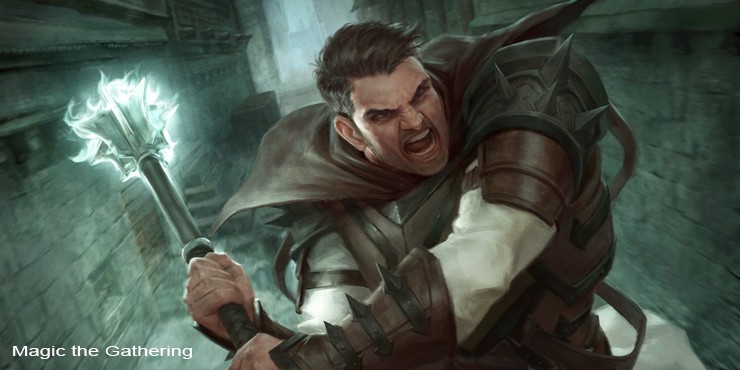
Moral puzzles are all about a PC’s character development. The choices they make throughout the campaign shape who they are in your world. And more often than not, these choices represent deep moral dilemmas. D&D puzzles can be a perfect vehicle for incorporating moral dilemmas into your game in a fun and meaningful way. Here’s how it works:
A moral puzzle is always an ethical dilemma where players have to choose between A or B. But the choice is difficult. Both choices have pros and cons. Choose the pros and players will also choose the cons. You can set up a puzzle challenge in a way so that PCs need to make a choice about which path to take. For instance:
“The players find a giant cave with two doors. The left door leads to a rod of healing which can cure a plague that’s been laying waste to a local community. The right door leads to the only sword in existence that can harm a demon about to break free. Each of these doors is held shut with a water puzzle lock. But there is only enough water to solve one puzzle and time is running out.”
With this setup, instead of just talking about an abstract choice players can sink their teeth into a concrete puzzle challenge. There are lots of different types of puzzles and setups for incorporating moral puzzles into your game. Here’s a more comprehensive overview of moral puzzles you can use.
4. Mechanical Puzzles
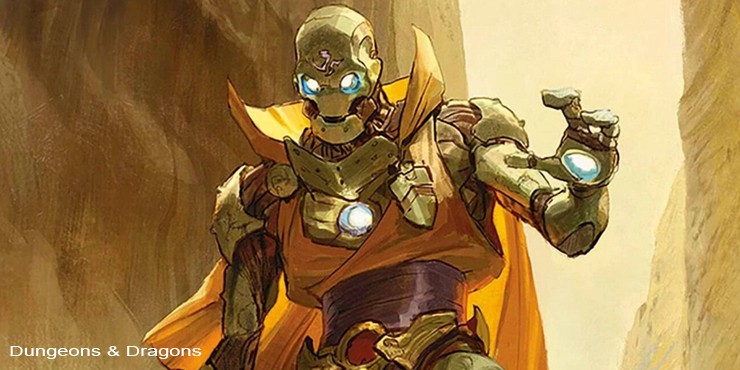
Pulling levers, activating stepping stones, and turning gears to bring some incomprehensible machinery to life. Who doesn’t love a good mechanical puzzle?
On their own a mechanical puzzle can be a bit simple. Players pull a lever and a door opens. Big whoop. But the secret to building a good mechanical puzzle is to combine smaller puzzles into more complex setups that players can gradually explore.
Once you start combining a lever on the ceiling with a gear puzzle that must be turned while all the PCs are standing on the correct stepping stones, mechanical puzzles become a lot more interesting. And you can mix and match these building blocks endlessly to your heart’s content or the players doom. Whichever comes first.
To keep an overview, I’ve written a complete mechanical puzzle guide on how to quickly combine different building blocks to making a more complex mechanical puzzle that challenges your players. It also comes with a free puzzle example.
5. Logic Puzzles

Logic puzzles offer a simple set of rules players must follow to arrive at a single answer. There is only ONE possible correct solution to a puzzle and it is this clarity that makes logic puzzles one of the most appealing types of puzzles to players.
The classic two guards puzzle is a perfect example of a logic puzzle. Here’s how it works:
“There are two guards; each protecting a door. One door leads to success, the other to certain doom. You may ask one question to one guard to find the correct door. However, one guard always lies and the other always tells the truth.”
The solution is to ask a guard which door the other guard would say leads out. It doesn’t matter which guard you ask. Because if you ask the liar he will point to the wrong door. And if you ask the truthful guard, he will also tell you the liar will point you to the wrong door. It’s a sure way of learning which door is correct.
But the two guards puzzle is the very simplest of logic puzzles. There are a ton of excellent logic puzzles to choose from. Almost all puzzles I design incorporate logic. Players hate puzzles where any solution they come up with kinda sorta will do. And they like to be clear on the rules as well. A credo among puzzle designers is that ‘a good puzzle wants to be solved’ and with the clear rules set logic puzzles offer your players can dive right in.
If you want to create your own logic puzzles, I’ve written a step-by-step logic puzzle guide here with a free example. But the puzzle bundle offers hundreds of logic based puzzles for D&D.
6. Combat Puzzles
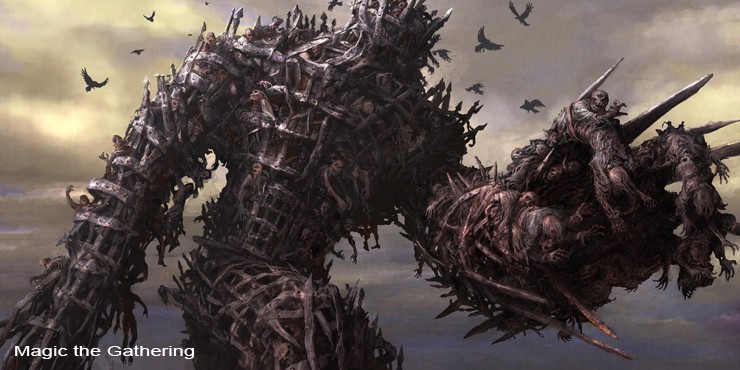
Puzzles and combat? What could be better! Sure, it’s fun crushing your enemies and seeing them driven before you. But why not add a bit of clever puzzle tactics to the challenge? With combat puzzles you have plenty of options. There are five basic setups to choose from. I personally like the fifth option best, but decide for yourself which one you like:
- The first option, is to give players a puzzle with multiple steps and summon a creature every time they make a mistake. Pull the wrong lever? Spiders. Turn a dial in the wrong direction? Beholder. Hey, nobody said the life of an adventurer would be easy.
- The second option is to have a creature appear at set times. Maybe a shadow appears once every minute in real time or you can start with an easy creature a work your way up. Hello Tarrasque?
- Your third option for puzzle combat is a guardian that will only let players pass if they solve a puzzle. Now it’s a choice between beating the puzzle or the guardian.
- The fourth combat puzzle is the golem that is completely immune to damage and keeps attacking the party for the entire duration of them solving the puzzle.
- The fifth type of combat puzzle is where the monster IS the puzzle. With gargantuan monsters players need to place puzzle pieces on the monster’s body which are hard to reach. And reaching those places can be a puzzle in and of itself. With smaller monsters you must lure them to places where you can bypass their defences.
Here’s a more extensive article on running D&D combat puzzles with suggestions for what puzzles work best.
7. Magic puzzles
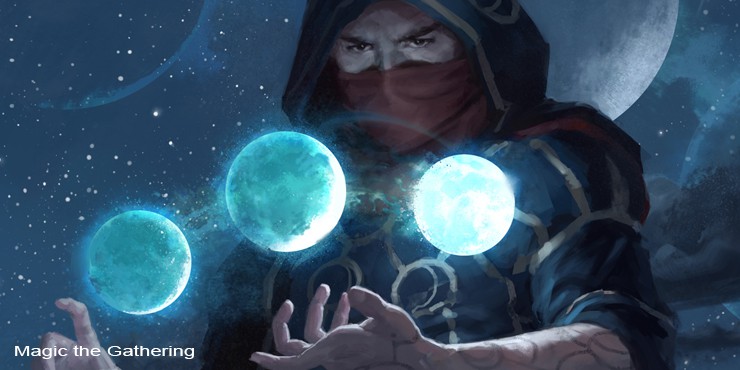
Magic. It fills the players’ world with wonder. And at some point during your puzzle, your players just expect those sigils to start glowing.
There are two ways of using magic in puzzles. The first, is to make a magical puzzle. For instance, with my laser puzzles centuries old living statues shoot lasers from their eyes. Players don’t question why this happens, it’s magic!
But even though magic kind of lets dungeon masters get away with anything, your puzzles should always have some inherent logic. Even your magic puzzles. Adding magic to your puzzles doesn’t just create wonder. It also sets limits to what players can do to circumvent puzzles.
The second way to use magic in puzzles is to use a puzzle system for magic item creation. Which is exactly what I’ve done with potion puzzles. With this puzzle players must find rare plants and a magical formula to brew a potion, ink, dye or polish that is the key ingredient to creating a magic item. Now gaining that flaming sword they’ve always wanted becomes an exciting puzzle quest your players never expected.
8. Dungeon puzzles
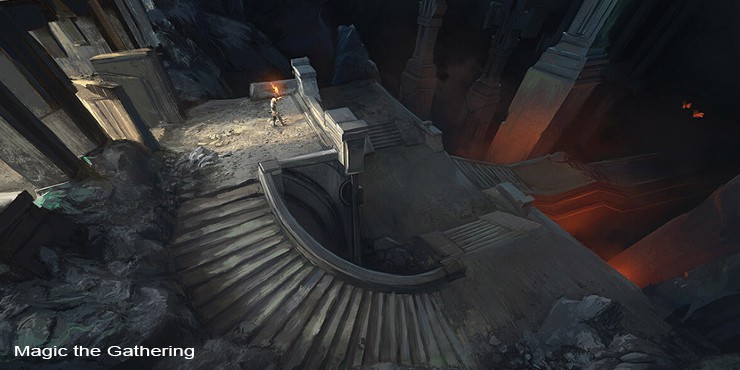
When you think about dungeon puzzles, you’re probably picturing putting multiple puzzles into a dungeon, right? But we’ve already covered those types of puzzles, so let’s do something that your players won’t expect. Let’s turn the entire dungeon into a puzzle!
With Dungeon Puzzles the players are given a fragmented map of the dungeon. But the sections of the dungeon are all scrambled. Either through mechanical of magical means they start rotating pieces of the dungeon map so all sections connect. Of course, connecting pieces might free monster or lead to different map fragment that weren’t accessible before.
The great thing about this puzzle is that the dungeon tiles are instantly playable. So in solving the puzzle players are laying out the map for their tokens to play on.
9. Mystery puzzles
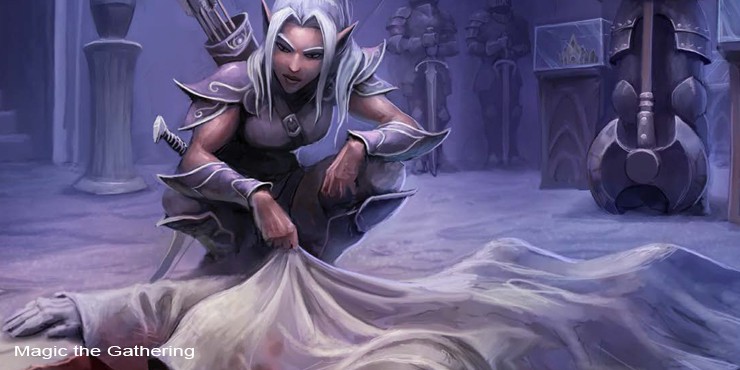
I love a good mystery puzzle. But they can be complicated to design. So here are some tips to make building your own D&D puzzle mystery a breeze.
- The Red Herring Mystery: You start with a murder scene and pick one detail ‘that only the killer could know’. It’s usually something like a missing earring or a letter. Next, the PCs are first to the scene and find the clue. The third part of this setup is when the true killer accidentally let’s slip the information only the killer could know. Last, you add a cast of colorful suspects with motives and opportunity, but no real evidence tying them to the murder. These are your red herrings to distract players from the obvious slip when the real killer misspeaks. This is basically the plot of every ‘murder she wrote’ episode and how most puzzle mysteries are build.
- The second setup requires a little courage on the DM’s part. You completely improvise this mystery puzzle and if done correctly, it will seem to the players you spent hours prepping. Here’s how it works: You start by describing a scene, and then you add an oddity. For example: “You find the victim dead in his bed. Only, there’s a fresh candle burning.” Players could then investigate who could have access to the room or fresh candles. The DM provides an answer, but again adds an oddity. “You find a box with one missing candle in the storage room, oddly it was locked from the inside.” The DM just keeps offering oddities for the players to investigate until there’s only one option left. That’s the solution to the mystery puzzle.
- The next option is to use a premade puzzle mystery adventure. I’ve created the ‘murder in the monastery’ adventure for this purpose. It contains a lot of puzzles, but the fun part of this adventure is that most of the puzzles can be switched out for different puzzles. It creates a nice structure for creating mystery puzzles.
10. Rune puzzles
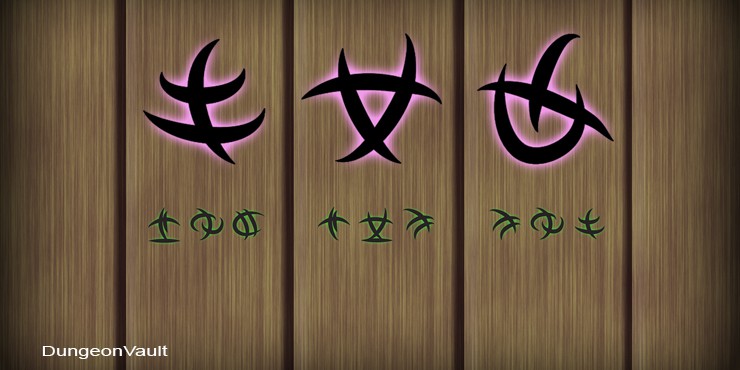
The party stumbles upon an ancient pillar covered in a Rune language long forgotten. They must decipher the runes and reveal their secrets through divination, scouring temples, and breaking into the imperial library. Runes can also be found in spell books carried by competing villains who seek Rune knowledge for their own nefarious purposes.
Successfully uncovering the Rune language could lead the party to uncover a secret that determines the very survival of the realm – or it could just be an amazing noodle recipe. This is your world after all.
Most rune puzzles fall into one of two categories:
With the first, players must translate the runes into another language. My Rune Puzzles pack (see image above) contains 30 of these type of rune puzzles that you can place onto any object. From unlocking the powers of a magical sword to deactivating a wall of force. You can use them in any scenario.
The second type of rune puzzle, focuses on individual runes as symbols of power. My Runestone Puzzle pack uses these types of runes. You can tie a whole world of lore to these symbols of power or just use them on the fly.
In any case. It’s my experience that players LOVE runes. Don’t know why but every time I introduce a rune themed puzzle it goes over well.
11. Maze puzzles
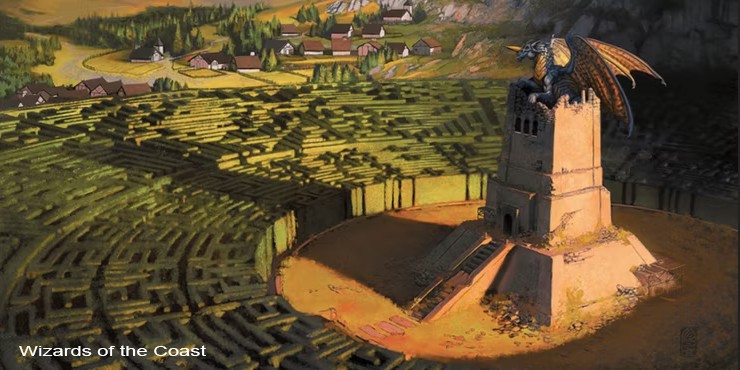
Mazes are probably the biggest puzzles your players will ever encounter. Finding their way through a labyrinth puts them right in the middle of the action. And you can place more puzzles in the maze. Puzzles within puzzles!
Most mazes in Dungeons and Dragons can be found underground. The lair of giant ants or old dwarven ruins might have many confusing pathways. But another really cool use of mazes is to use them for wilderness travel. Any time PCs need to make their way through a swamp, mountain range or any other difficult terrain, you could turn it into a maze puzzle challenge.
When using maze puzzles please don’t make the mistake of using ordinary maze puzzles you can find online. These do not work well for Dungeons & Dragons. Instead I invite you to try my free maze puzzle for wilderness travel.
12. Political puzzles
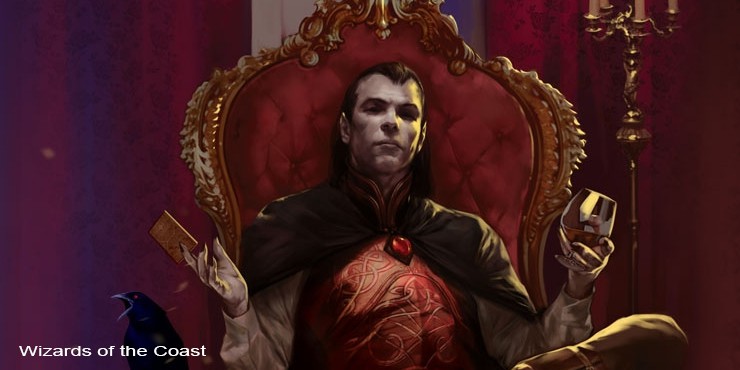
Do you love political intrigue? The thrill of a well placed bribe, the pure joy of a mutual beneficial alliance, and pleasure of a good double-cross? Then political puzzles are for you!
Dungeons and Dragons has very little rules on running political campaigns. And that’s a shame because – even for experienced dungeon masters – they are notoriously difficult to do well.
To make things easier for DMs and players, I designed a system for creating political puzzles that is also a complete rule set for running political campaigns. You can get a free short version of the rules here. The expanded version includes 20 political puzzles.
With this puzzle system players will have to make and break alliances. Betray, set up, bribe, blackmail, manipulate, and even assassinate they opponents. It’s keeps players at the heart of the story and focuses on the action, while having to puzzle out tactical political decisions throughout.
13. Forest puzzles
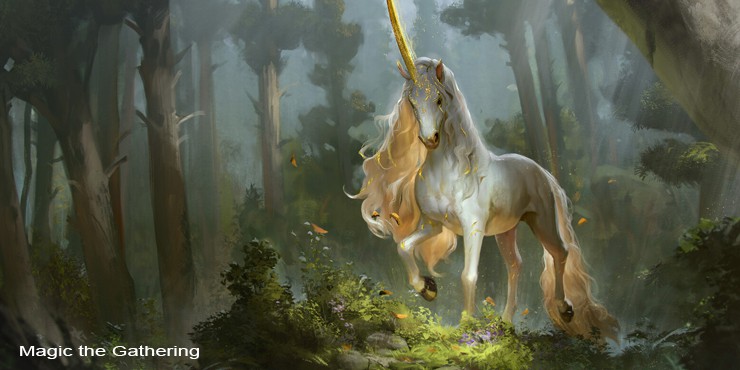
Forests, they’re all the rage among elves and home to some fierce creatures. But instead of dodging arrows and elven poetry, forests can also be home to a variety of puzzles.
Forests are so much more than places for PCs to travel through on their way to their next adventure. Instead, they can be a treasure chest of magical ingredients needed to brew a hag’s potion. The leaf of the tallest tree, a flower that only blooms at night, a drop of unicorn blood. They can all be found in a forest. For combining foraging with a puzzle I use use Potion puzzles.
A second type of forest DnD puzzle focuses on the terrain. Forests are filled with trees, bushes, puddles, animal tracks, and so on. My wilderness puzzle uses these elements to create a unique puzzle challenge. And the puzzle pieces also create the terrain for a forest combat encounter.
14. Escape room D&D puzzles
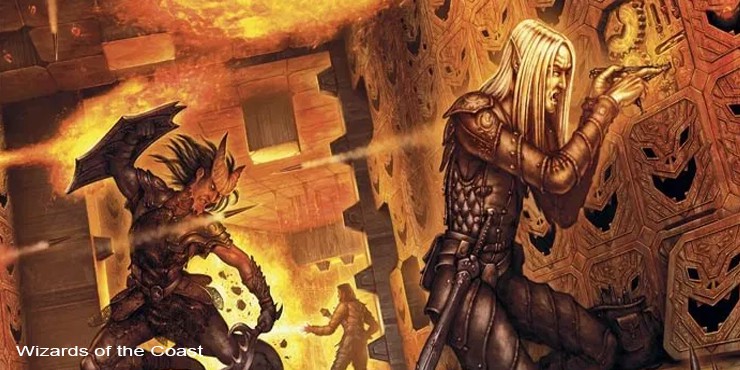
Escape room puzzles for Dungeons & Dragons can be fantastic IF they are done right. But there are a couple of things you need to know before you take the plunge.
First, escape rooms are incredibly puzzle intensive. A normal escape room takes about an hour to solve and you will need a lot of different puzzles to fill that time. Those puzzles can all be relatively easy, but they do need to have a lot of steps to solve. My tip would be to avoid difficult puzzles that have only one or two steps to solving them.
Second, a lot of players don’t like timed DnD puzzles. In fact timed puzzles are at the very bottom of this list. So make sure to check with your players if they enjoy a timed puzzle challenge. If they don’t, just give them all the time they need. You can still add a sense of danger by including a monster or trap here and there.
Third, you need to link and layer different puzzles for your escape room. I’ve written an article on how to do that. And it also offers some tips on what puzzles to use.
15. Elemental puzzles
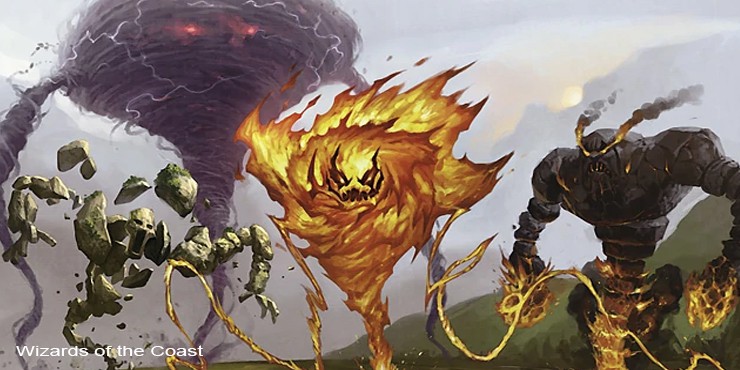
References to the four elements earth, fire, water, and wind can be found throughout Dungeons and Dragons. There are the elemental planes, elemental creatures, spells, powers and so on.
So much are the elements interweaved with D&D that they go with just about any campaign. It doesn’t matter if you’re running a pirate game or a wizards college; the elements will fit your theme seamlessly.
Using elements is also a great opportunity to use real world lore in your campaign which I’ve written an article about. And of course, I created an elemental puzzle pack. It comes with 30 DnD puzzles that are very easy to use in any campaign. But I’ve you would like to create your own instead the real world lore article should give you plenty of inspiration.
16. Chess puzzles
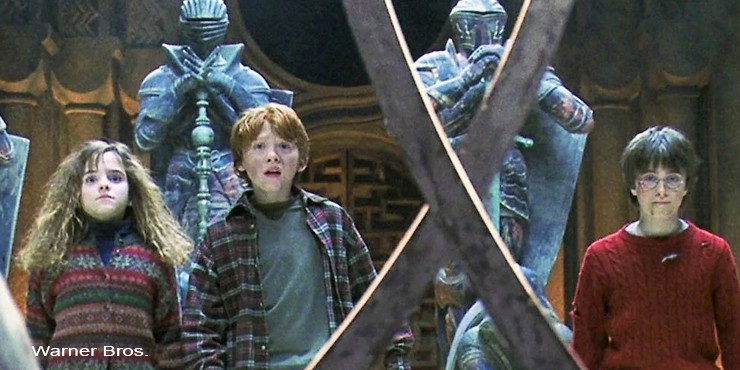
There are a lot of great puzzle designs using chess pieces. But the game of chess itself doesn’t scream Dungeons and Dragons. And players, in general don’t like to be reminded of things that don’t belong in the campaign world.
So how can we still use chess puzzle designs without… the chess?
We do what every dungeon master has done since the dawn of D&D. We use the chess puzzle design and add a different theme. Check out the Halfling Heart example at the bottom of the article I just linked to. I also did a bit of research specifically into what players like and dislike about chess puzzles which might interest you.
17. Mirror puzzles

There’s a ton of mirror puzzles that work well in Dungeons & Dragons. But please don’t copy mirror puzzles from video games you’ve played. Your players have solved these types of puzzles a thousand times before. And that’s probably why they are near the bottom of the list.
But what if we added a twist?
You could design a mirror puzzle around vampires. Those don’t show up in mirrors (or so I’m told). Here’s a quick mirror puzzle I designed using vampires. Another twist would be to combine laser puzzles with mirrors. And then there’s the zombie, vampire, ghost puzzle by Simon Tatham.
In short, there are plenty of better DnD puzzle options.
18. D&D Riddle puzzles
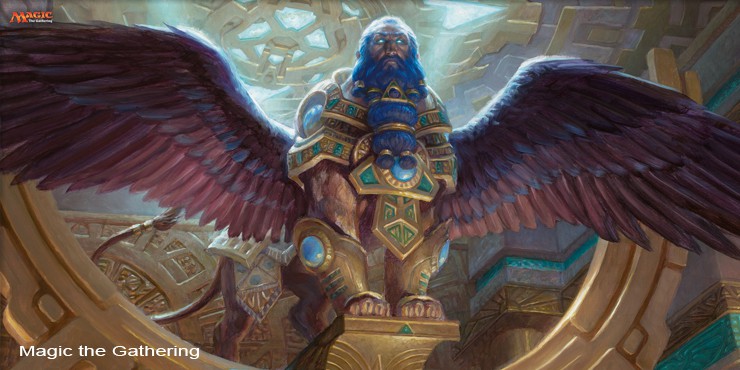
Why are D&D riddles almost at the bottom of the players best puzzle list? Because, to put it bluntly, most DnD riddles are notoriously bad. And there’s a reason for that.
When you read or design a riddle as a dungeon master, you know the answer and therefore it will be obvious to you. But for the players riddles are often a bunch of vague words with links that only become clear after your hear the answer.
With ordinary riddles, there’s no journey of discovery and no strategy to follow. And on top of that, even when the dungeon master reveals the answer, there are often a couple of other answers that would also have been correct. It’s almost like D&D riddles go out of their way to break all the rules of good puzzle design.
But there is a way around that. Here’s a whole article on riddles where I complain incessantly about bad riddle design AND I offer an alternative, free for you to use.
19. Loop puzzles

We can often learn as much from what players don’t like as what they do. Out of 1.000+ votes only a single one went to loop puzzles. They are the ultimate in making players feel stuck. With a looped puzzle players run out a corridor only to find themselves at the start of the same hallway. Endless staircases are also hated by beginning and experienced players alike.
Skip this one. There are better options!
20. Timed DnD Puzzles
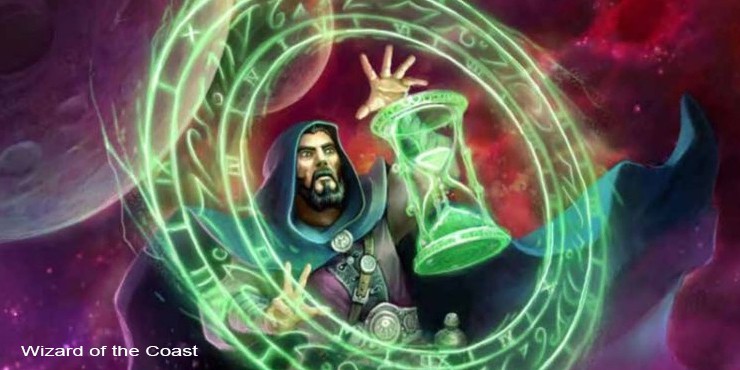
Out of over 1.000 players in my survey not a single one chose timed puzzles as their favorite.
It’s safe to say that players don’t like to be rushed when they are solving a puzzle. Trying to find the correct answer can be taxing enough without having to worry about running out of time. As a dungeon master you want to hit the sweet spot of excitement but not overshoot into anxiety. And that’s precisely what timed puzzles often do.
Instead of doing looped or timed puzzles, players like to have a flow experience where a series of successes ultimately lead to solving the entire puzzle. Adding flow to your puzzles is key to players having fun. It’s the number one design aspect I try to incorporate into all of my puzzles.
Final thoughts
When it comes to selecting the best D&D Puzzle, my policy has always been to just give the players what they want. Because in the end, there is no best puzzle; there is only the puzzle your group enjoys. Of course, variety is the spice of life. And no one puzzle can do it all.
In the Vault Bundle I selected hundreds of puzzles and other materials that are playtested to make sure they work for you AND are fun for players. You’ll have all the puzzles you could possibly need and then some! If you would like to get the complete collection, be sure to check it out.
